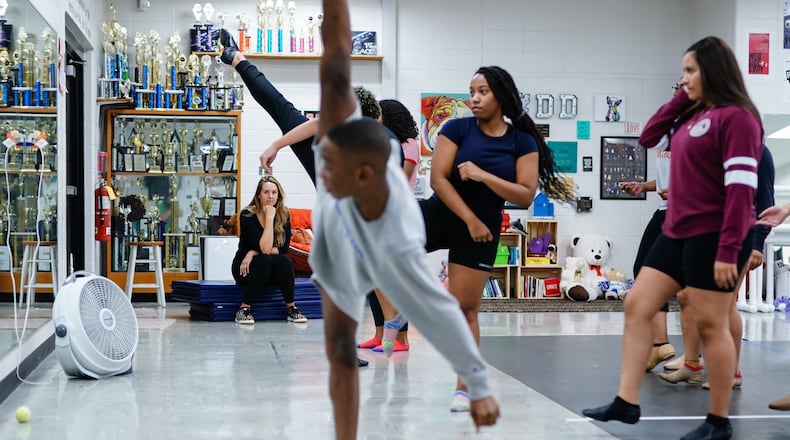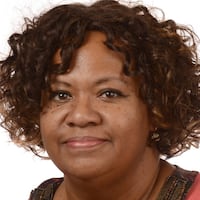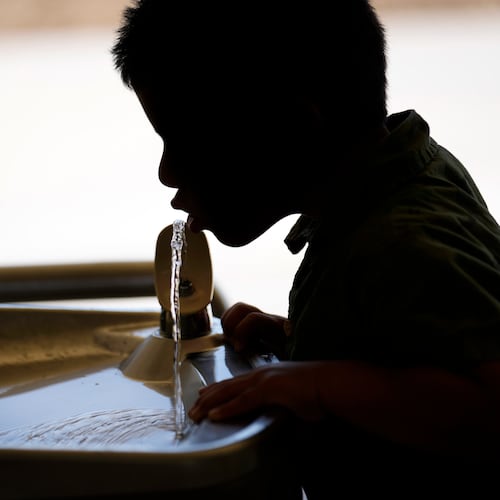To the casual observer, the students doing pirouettes and moon-walking to a Michael Jackson number in Melissa Colon’s after-school practice at Babb Middle School are having fun learning the routine and getting exercise.
But like those in countless classes throughout the state and the country, these students are developing skills that not only will help in careers where they’ll perform in front of audiences, but could also help them become better doctors, engineers, construction contractors, firefighters, teachers or other professionals.
For the past decade or so, there's been a renewed emphasis on arts education. When many schools reduced or did away with extracurricular courses such as band, dance and visual arts, one effect seen was students less engaged and less likely to hone skills such as critical thinking, collaboration and creativity.
A study by the College Board showed that students who took four years of art scored 91 points better on the SAT college-entrance exams.
After the recession of 2008, 80% of the nation’s schools faced budget cuts. During that same time, the call for school accountability emphasizing standardized tests pushed educators to prioritize science and math over other subjects. Arts programs often were the first victims, and lower-income and minority students were the most likely to lose their art programs. In Los Angeles County alone, one-third of the arts teachers were let go between 2008 and 2012, according to state data.
A survey by the National Assembly of State Arts Agencies showed that during fiscal year 2019, after adjusting for inflation, art funding throughout the years has decreased 43.4 percent.
“In general, numerous studies have shown the direct correlation of arts education to positive social, emotional and academic impact. It provides discipline and an environment that breaks down social and cultural barriers, while giving students a chance to explore their talents and abilities,” said Jennifer Dobbs, executive director of the ArtsBridge Foundation, citing data from the National Endowment for the Arts, the U.S. Department of Commerce, the U.S. Department of Education and several college-level studies.
ArtsBridge provides arts education experiences to students across the state as well as Alabama, Tennessee, Florida and the Carolinas. Programs such as field trips to Cobb Energy Center, Career in the Arts classes and others supplement arts classes in schools. ArtsBridge also provides training for educators.
An ArtsBridge event showed 13-year-old Benjamin Bridges that his love of dancing could one day become a career. During a workshop with an Alvin Ailey troupe, he showed off his moves with jetés and arabesques rivalling seasoned professionals.
“Since he was little, Benjamin was always moving and spinning and flipping around to any beat he could hear,” said his mother, Carla Hayes-DeVeaux. When she was a social studies teacher at Babb Middle, her son would hang around after school while she finished her work.
Drawn to the school’s dance studio, he’d join in with the bigger kids when he was in second or third grade, said teacher Colon. And even though he now attends M.D. Roberts Middle School for the Arts, he still attends Monday classes at Babb and will dance in their recitals.
“He’s got natural talent, flexibility, gymnastic ability, passion — and he’s good at everything,” said Colon. “What I tell anyone who’s serious about making dance a career is to keep learning.”
Benjamin’s been in a local junior version of the musical “Hairspray” and in workshops in Los Angeles and New York City.
“Dance really is my life,” he said. “It will always be a part of me.”
With the arts becoming a bigger piece of the state economy in the past few decades, it’s possible Benjamin may be able to fulfill his dream right here in the Peach State.
“Arts education is essential to fueling the creative industry here in Georgia,” said Emily Murray, a spokeswoman for Georgia Council for the Arts. “Students who experience the arts have more self-confidence to be more competitive and creative and drivers for economic success in the community.”
According to the Georgia Department of Economic Development, the creative industries in the state represent a combined $37 billion in revenue, including 200,000 employed with $12.1 billion in earnings; and total economic impact of $62.5 billion in, according to the latest figures available.
Charlie Starr, lead vocalist and guitar player for the Atlanta-based country/folk band Blackberry Smoke, understands the importance of arts education even though he said he didn’t experience much of it.
“I grew up when there was much more emphasis on learning things that would help you get a job and things like music classes weren’t a priority,” he said.
Fortunately for him, he had music in his blood. His dad was his “guitar hero” and his grandmother played the piano. Other relatives were in gospel choirs, and there was always music playing in the house or the neighborhood. When his friends were grooving on Black Sabbath, Led Zeplin and Aerosmith, Starr was picking bluegrass with his dad.
“I really liked both of them, actually,” he said. “I didn’t see much difference in the two and my style today kind of shows that.”
Without a background of music theory and exposure to a diversity of sounds, Starr sought them out himself.
“I’ve always been fascinated with the history of music and culture and how one can drive the other,” he said.
Growing up about 80 miles south of Atlanta in rural Alabama, Starr made his music home here instead of Nashville or somewhere else where traditional country and rock musicians would be found.
“This area is thriving … and there are tons of dedicated fans,” he said. “I don’t know if it was luck, but we found a way to make it work.”
His youngest son is 5 years old, and he’s glad that arts and culture are becoming more of a standard in education. Starr would like to see more emphasis on nurturing creativity and opportunities for students to look forward to school.
Others share that desire. One example is a school of the arts slated to open in January as part of Central Gwinnett High School.
“The city of Lawrenceville has given substantial funding to benefit students in this area,” said Shane Orr, principal.
With the nearby Aurora Theater as a venue for local professional performances, students who aspire to careers in the creative arts have another option, he added. But even students who will find themselves in the audience instead of on the stage will benefit greatly from the enhanced arts education.
“Arts education provides opportunities for development and to sharpen skills post secondary school,” said Orr. “Whether that’s college, workforce or something in between, that experience will set our students apart from the pack.”
He listed collaboration, willingness to compromise, cultural awareness, diversity and commitment as bonus lessons.
“We’re providing a safe space for students to build their soft skills, like confidence and communication,” he said. “Thinking imaginatively, being able to express yourself well are in-demand skills and the need for those kind of workers will only go up.”
Arts and culture economic impact in Georgia by the numbers
$37 billion in revenue
200,000 employees
$12.1 billion in earnings
$62.5 billion in total economic impact
Source: Georgia Department of Economic Development
About the Author
Keep Reading
The Latest
Featured


